Ran-dependent docking of importin-beta to RanBP2/Nup358 filaments is essential for protein import and cell viability
- PMID: 21859863
- PMCID: PMC3160583
- DOI: 10.1083/jcb.201102018
Ran-dependent docking of importin-beta to RanBP2/Nup358 filaments is essential for protein import and cell viability
Abstract
RanBP2/Nup358, the major component of the cytoplasmic filaments of the nuclear pore complex (NPC), is essential for mouse embryogenesis and is implicated in both macromolecular transport and mitosis, but its specific molecular functions are unknown. Using RanBP2 conditional knockout mouse embryonic fibroblasts and a series of mutant constructs, we show that transport, rather than mitotic, functions of RanBP2 are required for cell viability. Cre-mediated RanBP2 inactivation caused cell death with defects in M9- and classical nuclear localization signal (cNLS)-mediated protein import, nuclear export signal-mediated protein export, and messenger ribonucleic acid export but no apparent mitotic failure. A short N-terminal RanBP2 fragment harboring the NPC-binding domain, three phenylalanine-glycine motifs, and one Ran-binding domain (RBD) corrected all transport defects and restored viability. Mutation of the RBD within this fragment caused lethality and perturbed binding to Ran guanosine triphosphate (GTP)-importin-β, accumulation of importin-β at nuclear pores, and cNLS-mediated protein import. These data suggest that a critical function of RanBP2 is to capture recycling RanGTP-importin-β complexes at cytoplasmic fibrils to allow for adequate cNLS-mediated cargo import.
Figures
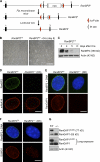
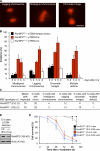

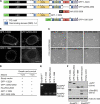
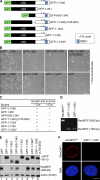

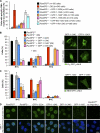

Similar articles
-
The nucleoporin Nup358/RanBP2 promotes nuclear import in a cargo- and transport receptor-specific manner.Traffic. 2012 Feb;13(2):218-33. doi: 10.1111/j.1600-0854.2011.01302.x. Epub 2011 Nov 21. Traffic. 2012. PMID: 21995724
-
The Nup358-RanGAP complex is required for efficient importin alpha/beta-dependent nuclear import.Mol Biol Cell. 2008 May;19(5):2300-10. doi: 10.1091/mbc.e07-12-1279. Epub 2008 Feb 27. Mol Biol Cell. 2008. PMID: 18305100 Free PMC article.
-
The nuclear pore component Nup358 promotes transportin-dependent nuclear import.J Cell Sci. 2009 Apr 15;122(Pt 8):1100-10. doi: 10.1242/jcs.040154. Epub 2009 Mar 19. J Cell Sci. 2009. PMID: 19299463
-
[Inner architecture of the nuclear pore complex and molecular mechanism of importin β-dependent nuclear transport].Seikagaku. 2015 Feb;87(1):56-63. Seikagaku. 2015. PMID: 26571556 Review. Japanese. No abstract available.
-
The importin β binding domain as a master regulator of nucleocytoplasmic transport.Biochim Biophys Acta. 2011 Sep;1813(9):1578-92. doi: 10.1016/j.bbamcr.2010.10.012. Epub 2010 Oct 26. Biochim Biophys Acta. 2011. PMID: 21029753 Free PMC article. Review.
Cited by
-
Nuclear Pore Dysfunction in Neurodegeneration.Neurotherapeutics. 2022 Jul;19(4):1050-1060. doi: 10.1007/s13311-022-01293-w. Epub 2022 Sep 7. Neurotherapeutics. 2022. PMID: 36070178 Free PMC article. Review.
-
The Role of SUMO E3 Ligases in Signaling Pathway of Cancer Cells.Int J Mol Sci. 2022 Mar 26;23(7):3639. doi: 10.3390/ijms23073639. Int J Mol Sci. 2022. PMID: 35408996 Free PMC article. Review.
-
Structure of the cytoplasmic ring of the Xenopus laevis nuclear pore complex by cryo-electron microscopy single particle analysis.Cell Res. 2020 Jun;30(6):520-531. doi: 10.1038/s41422-020-0319-4. Epub 2020 May 6. Cell Res. 2020. PMID: 32376910 Free PMC article.
-
eIF4E orchestrates mRNA processing, RNA export and translation to modify specific protein production.Nucleus. 2024 Dec;15(1):2360196. doi: 10.1080/19491034.2024.2360196. Epub 2024 Jun 16. Nucleus. 2024. PMID: 38880976 Free PMC article. Review.
-
Regulation of aPKC activity by Nup358 dependent SUMO modification.Sci Rep. 2016 Sep 29;6:34100. doi: 10.1038/srep34100. Sci Rep. 2016. PMID: 27682244 Free PMC article.
References
-
- Aslanukov A., Bhowmick R., Guruju M., Oswald J., Raz D., Bush R.A., Sieving P.A., Lu X., Bock C.B., Ferreira P.A. 2006. RanBP2 modulates Cox11 and hexokinase I activities and haploinsufficiency of RanBP2 causes deficits in glucose metabolism. PLoS Genet. 2:e177 10.1371/journal.pgen.0020177 - DOI - PMC - PubMed
-
- Balciunas D., Wangensteen K.J., Wilber A., Bell J., Geurts A., Sivasubbu S., Wang X., Hackett P.B., Largaespada D.A., McIvor R.S., Ekker S.C. 2006. Harnessing a high cargo-capacity transposon for genetic applications in vertebrates. PLoS Genet. 2:e169 10.1371/journal.pgen.0020169 - DOI - PMC - PubMed
Publication types
MeSH terms
Substances
Grants and funding
LinkOut - more resources
Full Text Sources
Molecular Biology Databases
Research Materials
Miscellaneous

